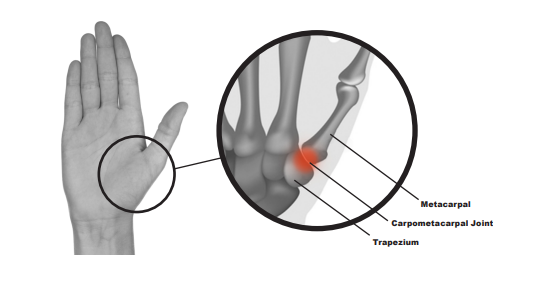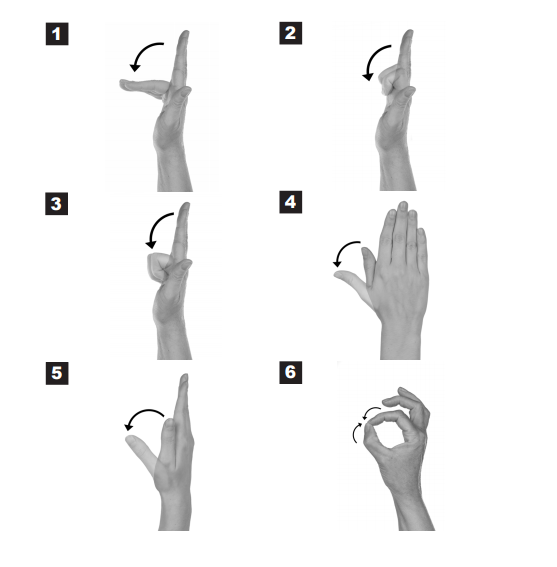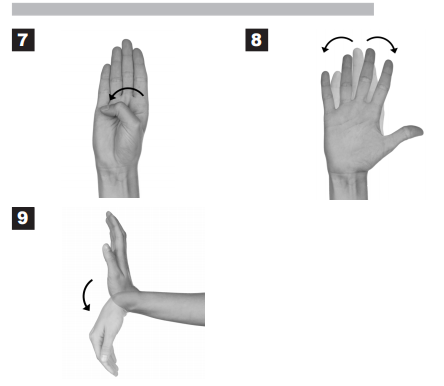Base of thumb pain
To view this page as a PDF click here.
Introduction
When you stop to think about how much you use your thumbs it is easy to see why the joint where the thumb attaches to the hand can suffer from wear and tear. This joint is designed to give the thumb its large range of motion, but the trade-off is that the joint suffers a lot of stress over the years. This can lead to painful osteoarthritis that may require treatment as the arthritis progresses.
Anatomy of the Thumb
The thumb joint, called the carpometacarpal joint, is made up of a bone in your wrist called the trapezium, and a long bone at the base of your thumb called a metacarpal. The joint where these bones meet is set in a way that allows your thumb to move in nearly all directions. At the edge of these two bones is cartilage, which has a smooth slippery surface. This helps to reduce friction between the bones when they move together and acts as a shock absorber. In turn, the cartilage is surrounded by a membrane called synovium, which produces a fluid that helps to lubricate the joint.

What Causes Thumb Arthritis?
Arthritis is a general term used to describe a range of joint problems. The most common is osteoarthritis, a condition where the joint wears out, usually over a period of many years. A number of different factors contribute to this, such as genetics or a previous injury to the thumb.
What are the Symptoms of Thumb Arthritis?
Pain is the main problem with osteoarthritis of any joint. Thumb arthritis causes pain at the base of the thumb in the thicker part of the hand. In the early stages of the condition, you may only experience pain during or after activity, with associated stiffness. Later, when the condition worsens, pain and aching may be present even at rest. The joint often becomes stiff and begins to lose motion. Moving the thumb away from the palm may also become difficult. This can affect everyday activities that involve gripping.
What Treatments are available to treat thumb arthritis?
The treatment of arthritis of the thumb joint is based on the severity of symptoms. The goals of treatment are to relieve pain, increase function, and prevent deformity.
1. Self-Management Strategies:
It might be that you have already started to find ways of managing with your thumb arthritis. Think about what makes it better or worse. Think about what the goal of treating your thumb arthritis is for you. The following information may help you with this.
A) Joint protection
Joint protection means that you should use your joints differently, not stop using them altogether.
- Use Larger, stronger joints (use your hip to shut a drawer, rather than your hand).
- Spread the load over several joints (where possible use your whole hand to grip items, not just the thumb and index finger).
- Reduce the effort by using equipment to make tasks easier and less painful.
- Take regular rest breaks when using your hands during activities that are heavy or require prolonged grip or pinching
Ideas for joint protection in daily tasks:
i) Eating and drinking
- Use lightweight cutlery with large handles.
- Use mugs and cups with handles that can be held using all the fingers or the whole hand.
- When cutting with a knife or fork do not put too much pressure on any joint particularly the index finger or thumb.
- Use a sharp vegetable knife, which requires less pressure than a dinner knife, or buy knives which have the handles at 90 degrees.
- Lift plates with both of your hands, wrists straight and support the plate with the palms of your hands.
ii) In the kitchen
- Organise your kitchen so that it is energy saving in terms of personal effort, eg store commonly used items at waist height for easy access.
- Carry large items supporting underneath as well as by the handle, using an oven mitt or heat proof gloves for hot pans and dishes.
- Use a trolley or tray (carried with both hands flat underneath) to transport items around the kitchen.
- Choose kitchenware, cooking dishes and pans with large handles, lightweight and non-stick.
- Microwaves are useful as lighter dishes can be used and there is less washing up.
- Do not pour from a heavy pan, take liquid off with a cup or ladle or cook food in a metal draining basket or colander.
- When peeling potatoes and vegetables use a large contoured peeler, which requires a slacker grip. Consider buying ready peeled vegetables to cook.
B) Leisure Activities and Work
It is important to maintain leisure interests and hobbies. Think about alternative techniques, tools or equipment which may reduce pressure and pain in your thumbs.
Apply joint protection techniques to a task. Talk to an occupational therapist or physiotherapist about any specific questions you may have regarding daily activities at home, leisure or work.
C) Splinting
The pictures below show the type of support which may help. Your local Pharmacist may supply a range of suitable supports, or you may choose to order online.
These may help to rest and support your thumbs when they are aching or painful and may help reduce discomfort when you are doing tasks. On occasions a custom-made splint may be required. However, you will need to be referred for this.

D) Kinesiotaping
This is a tape which can be used to help the body’s natural heling process. There are video links online to demonstrate various taping techniques to help with this condition. You may need to try several to see which works best for you. Some suggestions can be found at the bottom of this page.
E) Exercises
Exercises can be useful to keep your joints moving and muscles strong. The following exercises should be introduced slowly. Try performing each exercise 5 times. Repeat these exercises 2-3 times each day.


2. Other Treatments that your Doctor may recommend
If the self-management approach does not help your symptoms and you find that everyday activities are still being affected, then the following treatments may be considered by your doctor or specialist:
A) Steroid injections
For some people, Corticosteroid (steroid) injections may be given. The injection is given into the joint at the base of the thumb and can be effective in relieving pain. Sometimes pain may flare up for a few days after the injection before settling down.
B) Surgery
For some people an operation may be required to help relieve pain and improve the function of the thumb. There are a few operations that may be appropriate, including replacement, fusion, and removal of the affected bones. In each case a period of rehabilitation will be required.
This will include splinting and exercises. You will be guided by the physiotherapist or occupational therapist in your local hospital, and you will need to do regular exercises at home. This is to help you regain your function and strength.
It will be at least 6 weeks before you will be able to drive. You should be able to return to full activity at 3 months. You would need to be referred to a hand surgeon to discuss these options.
Rydym yn croesawu gohebiaeth a galwadau ffôn yn y Gymraeg neu'r Saesneg. Atebir gohebiaeth Gymraeg yn y Gymraeg, ac ni fydd hyn yn arwain at oedi. Mae’r dudalen hon ar gael yn Gymraeg drwy bwyso’r botwm ar y dde ar frig y dudalen.
We welcome correspondence and telephone calls in Welsh or English. Welsh language correspondence will be replied to in Welsh, and this will not lead to a delay. This page is available in Welsh by clicking ‘Cymraeg’ at the top right of this page.